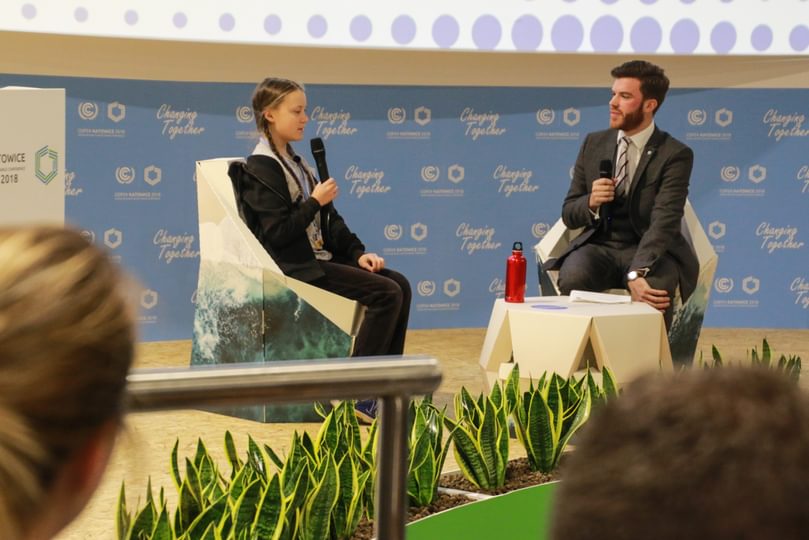
Photo credit: Meghan M. Shea
As the second and final week of COP24 begins in Katowice, Poland, what has happened so far? COP24 is the (very welcome) shorthand for the United Nations Framework Convention on Climate Change Conference of Parties’ 24th session. I have not followed the events as closely as I would have liked due to other commitments last week, so it is interesting to see what has got through to me via the media, both social and conventional.
The conference started with a call to arms from David Attenborough, who gave a speech to launch the People’s Seat, a new initiative that encourages everybody to have their say by using the #TakeYourSeat hashtag on social media. He used the opportunity to tell people that not only in the natural world at threat of extinction from climate change, but so is our civilisation. Social media was also a huge factor in the rise of Greta Thunberg, a 15-year-old Swede who has gone from a solo school strike for climate action to addressing COP24 in a matter of months.
The message of both these high profile heroes was borne out by the release of the Global Carbon Project’s assessment of carbon dioxide emissions for 2018. Not only have we failed to limit our emissions globally, but this year will also see fossil carbon emissions rise by an estimated 2.7%, the largest increase in 7 years. Every year that we delay the peak in emissions means we have to reduce emissions even faster after the peak, to limit warming to any chosen limit.
The biggest story over the weekend was that Saudi Arabia, the US, Russia and Kuwait refused to “welcome” the recent IPCC special report on 1.5oC, which the UNFCCC had requested. They insisted that COP24 merely “noted” the report. This is the report that states what is required to limit warming to 1.5oC or 2oC, and the consequences if we hit these thresholds. The science is very clear that every additional half degree of warming has adverse impacts on human life and ecosystems. To stop the warming, we must get our carbon dioxide emissions to net zero (i.e. to balance any emissions with removals). How long we take to get to net zero carbon dioxide emissions determines what the peak global mean temperature will be, combined with the warming from other anthropogenic climate factors (e.g. methane, aerosol) at that time. The report notes that these other factors should be reduced, but do not need to be reduced to zero as carbon dioxide does.
Issues surrounding how policies are developed to achieve net zero carbon dioxide emissions, and how reductions of other greenhouse gases are brought into the framework, will be discussed at a University of Oxford side event this week at COP24. We will have the New Zealand Minister for Climate, James Shaw, speaking about New Zealand’s path towards net zero. As a highly agricultural country, I will use New Zealand as an example of how we can best evaluate emissions with respect to the warming that is generated. James Martin Fellow Tim Kruger will then present work on how greenhouse gas removals can be best incentivised for the desired policy outcomes. The event will focus on how different sectors can most effectively play their part in climate mitigation, in particular in terms of greenhouse gas removals and on emissions other than carbon dioxide.
This opinion piece reflects the views of the author, and does not necessarily reflect the position of the Oxford Martin School or the University of Oxford. Any errors or omissions are those of the author.
